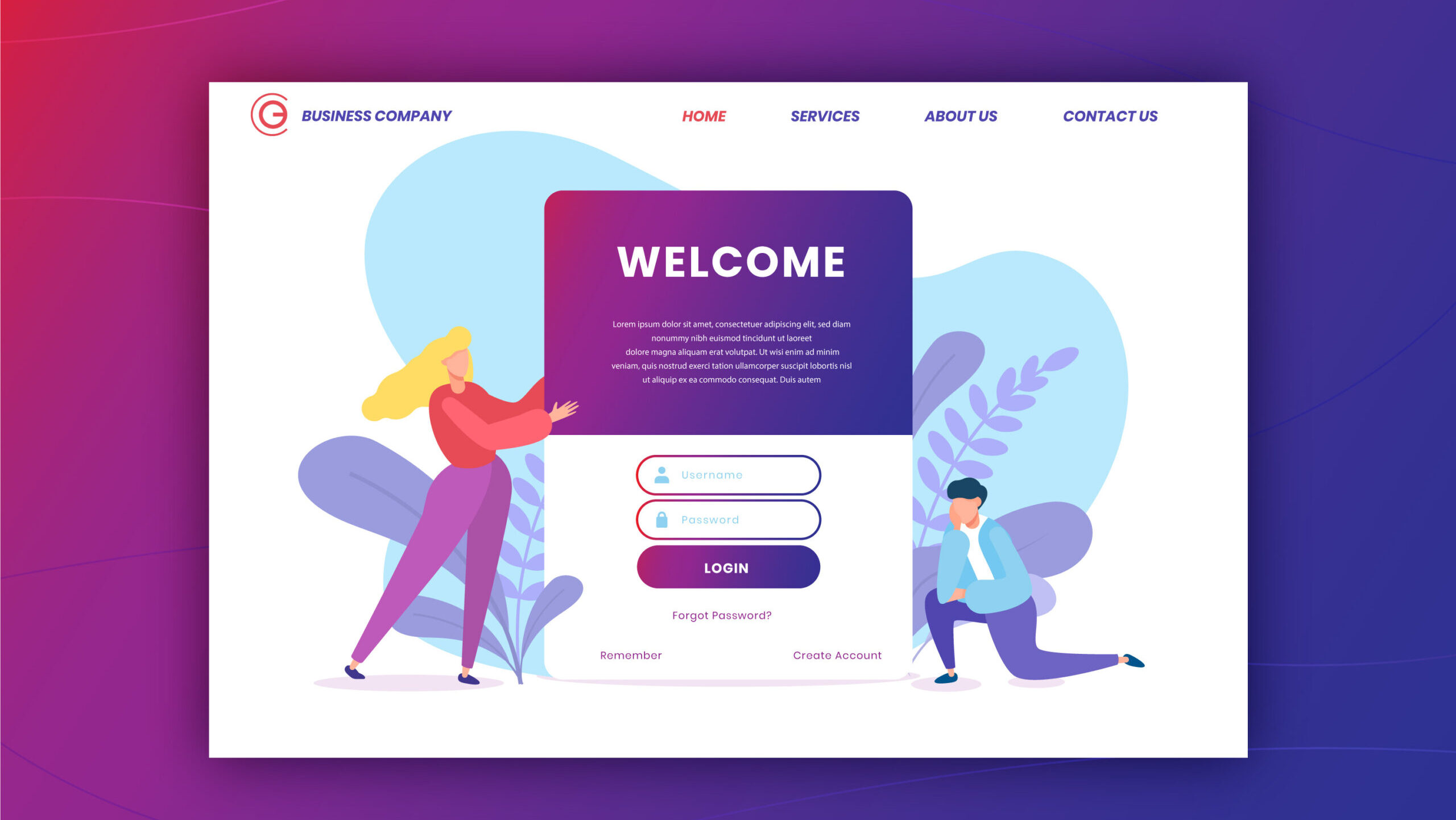
What is a Landing Page and Why Do You Need One
What is a Landing Page and Why Do You Need One
Scrolling through a search engine or clicking an ad, you’ve likely stumbled upon single-page sites designed to get you to act—maybe sign up, download, or even buy. Those single-focus sites? They’re called landing pages. While the concept sounds straightforward, the mechanics, purpose, and artistry behind these pages reveal why they’ve become foundational in digital marketing.
what is a landing page
A landing page is a standalone web page, created specifically for a marketing or advertising campaign. It’s where a visitor ‘lands’ after clicking a link in an email, ad, or a social post. Unlike the homepage of a website, which often points you in multiple directions, a landing page is focused on a single goal, known as a call to action (CTA).
Common actions a landing page might prompt include:
- Subscribing to a newsletter
- Registering for a webinar
- Downloading an e-book
- Making a purchase
- Filling in contact details for a free consultation
Their laser focus is what makes them so useful.
Landing page example:
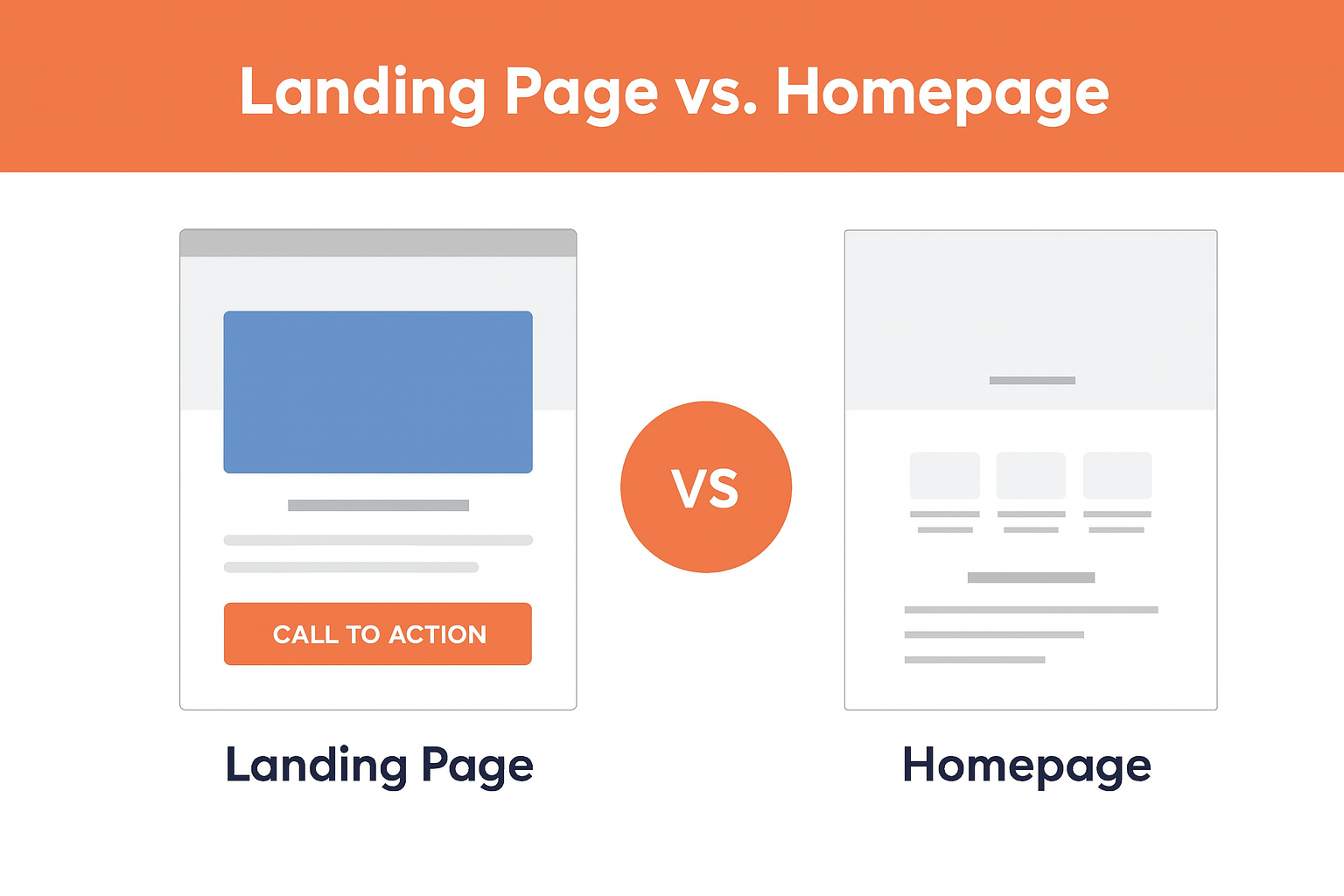
Why Landing Pages Matter
Homepages take on the role of welcoming the visitor to a brand, offering an overview or a directory of services. Landing pages, by contrast, have a mission: direct the visitor towards a specific result.
Lead generation is a key reason landing pages are built. By offering valuable content in exchange for information (usually an email address), businesses can build databases of potential clients. Sales landing pages, by comparison, highlight a product’s features and encourage users to act without distractions.
With the growing complexity of online advertising, landing pages also solve a major challenge: message match. When someone clicks an ad promising “20% off hiking boots”, landing them on the general homepage wastes their attention. But a dedicated page that continues the ad’s narrative keeps interest high and conversion rates up.
How Landing Pages Generate Leads
Landing pages are powerful tools for capturing leads because they focus the visitor’s attention on a single, compelling offer. Typically, a lead capture form is placed prominently on the page, inviting visitors to share their contact details—most often an email address—in exchange for something valuable. This value might come in the form of a lead magnet, such as an eBook, a free trial, a webinar registration, or a discount code.
By removing distractions and presenting a clear call to action, landing pages guide visitors through the first step of the lead generation funnel. Every element on the page, from the headline to the visuals, is designed to reinforce the offer and encourage form completion. Once a visitor submits their information, they become a lead—ready for further nurturing through email marketing or sales outreach. This focused approach not only increases the quantity of leads but also improves their quality, as each lead has already shown interest in a specific offer or solution.
How to drive traffic to landing page
Driving traffic to your landing pages is essential for maximising their impact. Effective sources include paid advertising campaigns on platforms like Google Ads and Facebook, which allow you to target specific audiences with precision. Organic search traffic can be increased by optimising your landing page for relevant keywords, ensuring it ranks well in search engine results. Social media channels offer another avenue, enabling you to share your landing page with engaged followers and leverage targeted promotions. Email campaigns remain a powerful method, delivering your offer directly to subscribers who have already expressed interest in your brand. To achieve the best results, segment your traffic based on audience interests or behaviours, and tailor your messaging accordingly—this ensures each visitor lands on a page that resonates with their needs and increases the likelihood of conversion.
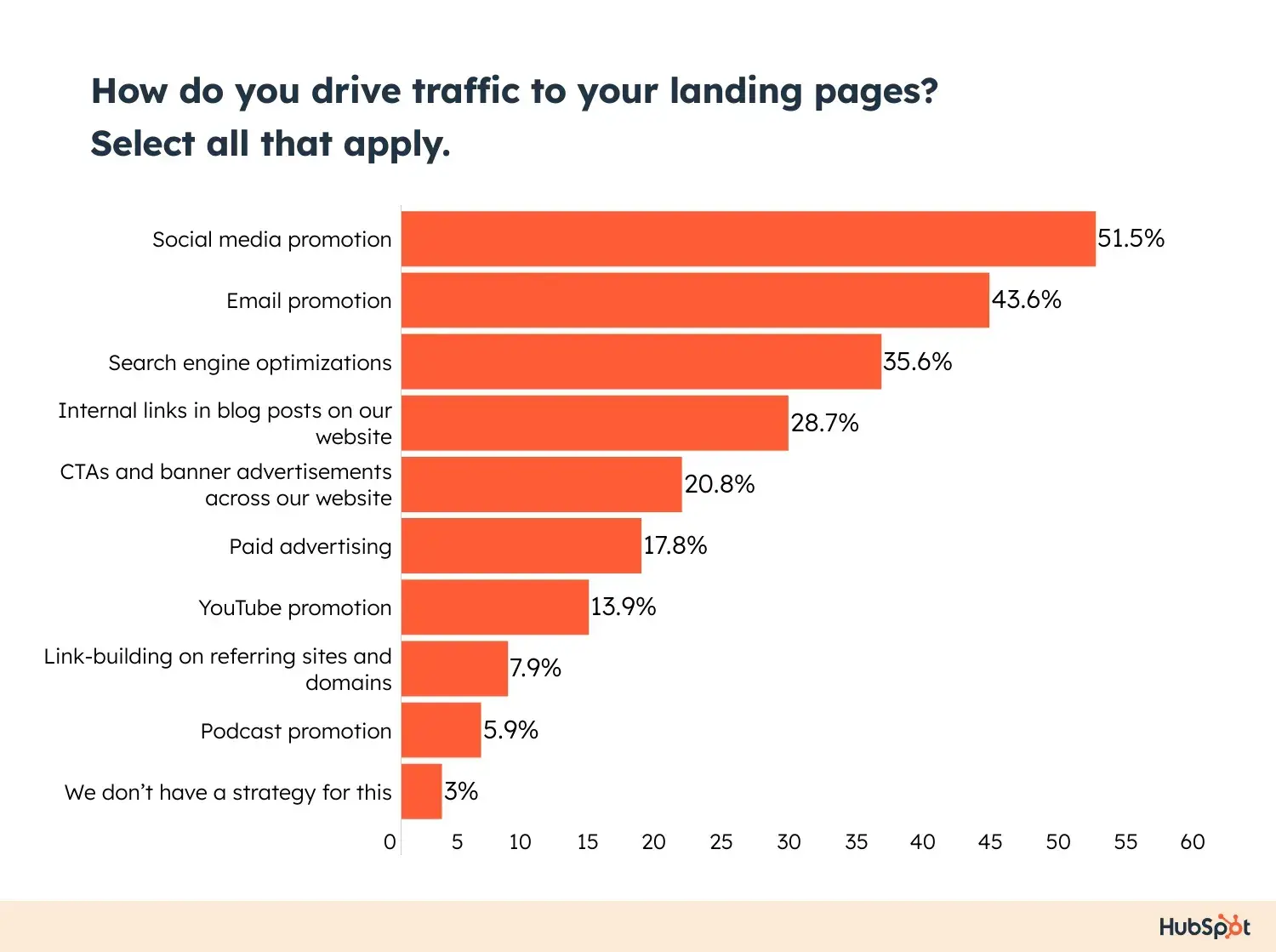
Image Source: Hubspot
The Anatomy of an Effective Landing Page
At first glance, most landing pages look deceptively simple. That’s by design. Every element is intentional, removed if it doesn’t serve the main goal. Critical components usually include:
| Element | Purpose |
|---|---|
| Headline | Grabs attention; summarises the page’s main offer |
| Supporting text | Clarifies or expands on the headline |
| Visuals | Showcases the product, service, or value proposition |
| Form/CTA button | Where the action happens—form fields or actionable button |
| Trust signals | Testimonials, security badges, or partner logos |
| Minimal navigation | Few links, to limit distractions |
Simplicity isn’t just about aesthetics; it’s about reducing friction. The less work a visitor needs to do, the more likely they’ll take the desired action.
Headline and Sub-Headline
If the headline falls flat, so does the rest. That opening line must match the visitor’s expectation and establish value. Supporting copy can provide clarity or address pain points, nudging the visitor toward the CTA.
Visual Appeal
Images, illustrations, or even videos provide context and build trust instantly. For a product landing page, a crisp photo or demo video reassures visitors they’re in the right place.
The Form or CTA
Every landing page needs a step: sign up, buy now, get started. The form should request only necessary information, and the button should leave no ambiguity. A classic example? “Start Free Trial” or “Get My Download”.
Building Trust
Anecdotal evidence still goes a long way online. Reviews, testimonials, recognition from media, and even privacy assurances boost credibility and push hesitant visitors toward action.
Types of Landing Pages
Different objectives require different formats. The four most common landing pages are:
- Lead Capture Pages: Used for collecting user data; usually offer something valuable in return, like a free guide or e-book.
- Click-Through Pages: Warm up visitors, explaining benefits and features, leading them toward a more detailed transaction, like a product checkout.
- Sales Pages: Longer form, sometimes several scrolls long; use persuasive storytelling to address concerns and encourage a purchase.
- Event Registration Pages: Promote sign-ups for webinars, workshops, or live events with all relevant information on a single, focused page.
Each functions differently, but all strip away anything that could distract from their intended outcome.
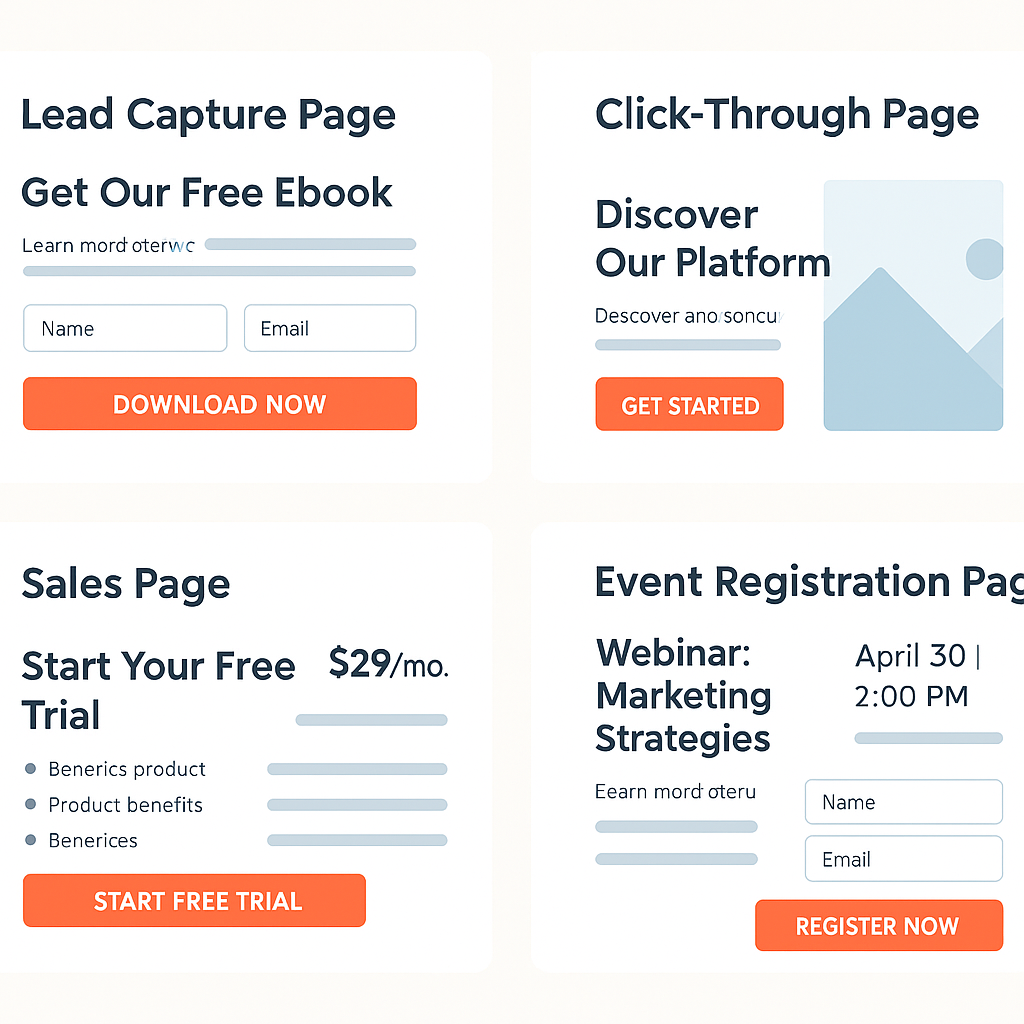
The Importance of User Experience on Landing Pages
User experience (UX) is at the heart of every high-performing landing page. A seamless UX ensures that visitors can quickly understand the offer, navigate the page with ease, and take action without confusion or frustration. This means clear headlines, intuitive layouts, fast load times, and mobile-friendly design are non-negotiable. Every element—from the placement of the call to action to the use of whitespace—should guide the visitor’s attention toward the desired outcome. By prioritising user experience, you not only increase the likelihood of conversion but also build trust and credibility, making visitors more likely to engage with your brand in the future.
Effective landing page UX also involves anticipating and removing obstacles that could cause hesitation or abandonment. This includes minimising the number of form fields, providing reassuring trust signals like testimonials or security badges, and ensuring that the page loads flawlessly on all devices. Visual hierarchy plays a crucial role, using size, colour, and contrast to highlight the most important information and actions. Additionally, accessibility should be considered so that all users, regardless of ability, can interact with your page. When these UX principles are woven into your landing page design, you create a frictionless journey that not only delights visitors but also drives measurable business results.
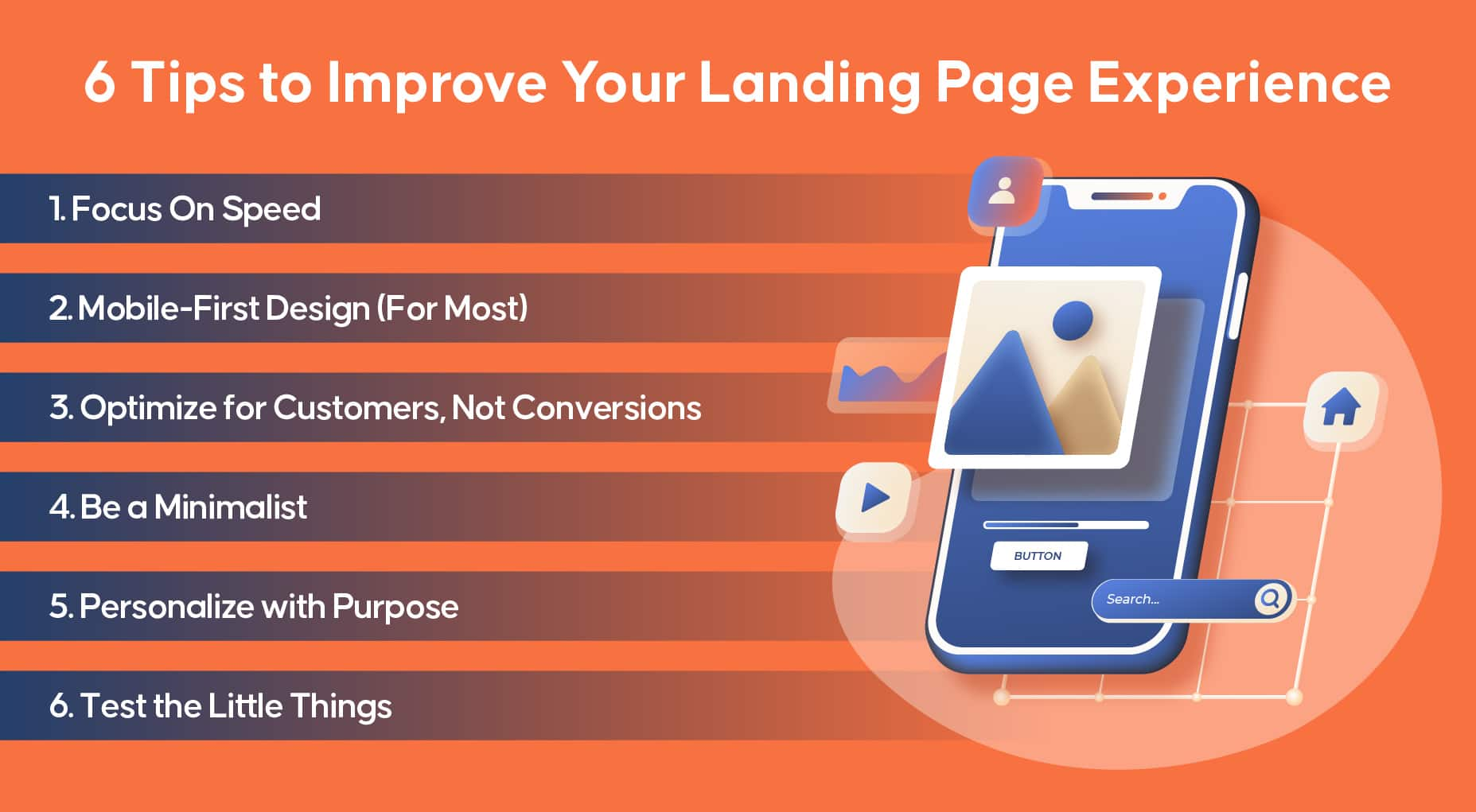
Image Source: Inquivix
Strategy: Landing Pages and Visitor Intent
No two ads or campaigns are exactly alike, and neither should the corresponding landing pages be. The best strategies align the visitor’s expectation with the page they see.
Say your audience clicks on a Google ad for “Affordable Home Insulation in Auckland”. If they’re dropped on a generic homepage, they’ll hunt for the right info—or not bother. But, a page with headlines like “Get a Free Quote on Home Insulation in Auckland” instantly validates their decision to click.
Marketing-savvy brands tailor landing pages to suit visitors at every stage:
- Product launches use high-impact visuals and enticing offers.
- Ongoing newsletters highlight value, using copy aimed at relationship-building.
- Time-limited promotions spotlight urgency and bold CTAs.
Splitting traffic across tailored landing pages allows for testing, refinement, and ultimately, increased return on ad spend.
What Sets Landing Pages Apart from Other Pages
The difference between a landing page and other website pages is purpose. Standard pages like services, about us, or blog, each fulfil a separate role—often informational, wide-reaching, and navigational.
Landing pages, on the other hand, block out the noise, often eliminating the main website’s navigation menu and footer. Here’s a comparison table:
| Website Page | Landing Page |
|---|---|
| Multiple goals | Single focused objective |
| Many links | One main call-to-action |
| Broad information | Specific, campaign-driven content |
| Standard navigation | Minimal or absent navigation |
How Landing Pages Are Built
Plenty of tools exist for making landing pages, from all-in-one website builders to highly customised solutions. Some of the most popular include:
- WordPress with landing page plugins
- Dedicated platforms like Unbounce, Instapage, or Leadpages
- Drag-and-drop builders such as Wix or Squarespace
Developers sometimes craft them from scratch as well, especially for larger campaigns or when extra security and performance matter. The process generally involves:
- Identifying campaign objectives and target audience
- Writing headlines and benefit-driven copy
- Creating a visually engaging design, optimised for mobile
- Adding trust-building elements and a clear CTA
- Testing different versions (A/B testing) to fine-tune results
Optimising for Performance
Even the prettiest landing page fails if it doesn’t convert. Continuous improvement is the name of the game. Marketers often experiment with:
- Alternate headlines or button text
- Fewer or more fields in sign-up forms
- Different images or testimonials
- Colour changes to highlight CTAs
- Targeted copy for different audiences
A/B testing tools help by sending half of visitors to one version of the page, and the rest to another. Analytics track what works—and what misses the mark. Over time, this evidence-driven approach can double or triple conversion rates.
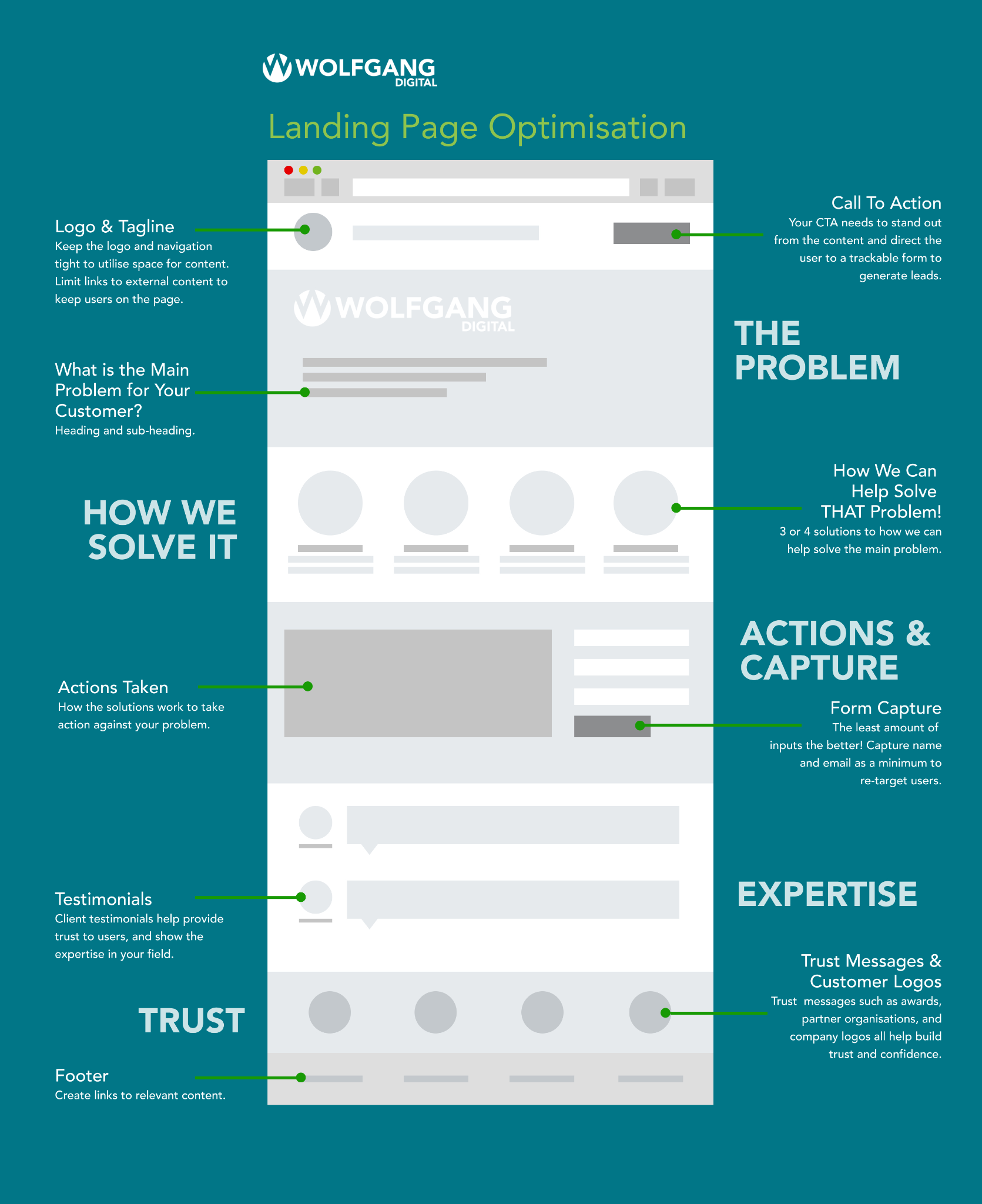
Image Source: Wolfgang
The Role of a Thank You Page
A thank you page is an important element in the customer journey, serving as a confirmation that a user’s action—such as completing a purchase, signing up for a newsletter, or submitting a form—was successful. More than just a polite gesture, an effective thank you page reinforces trust, provides clarity about what happens next, and offers opportunities for further engagement. It can guide users to explore additional resources, share their experience on social media, or take advantage of exclusive offers. By thoughtfully designing your thank you page, you not only express gratitude but also strengthen relationships and encourage continued interaction with your brand.
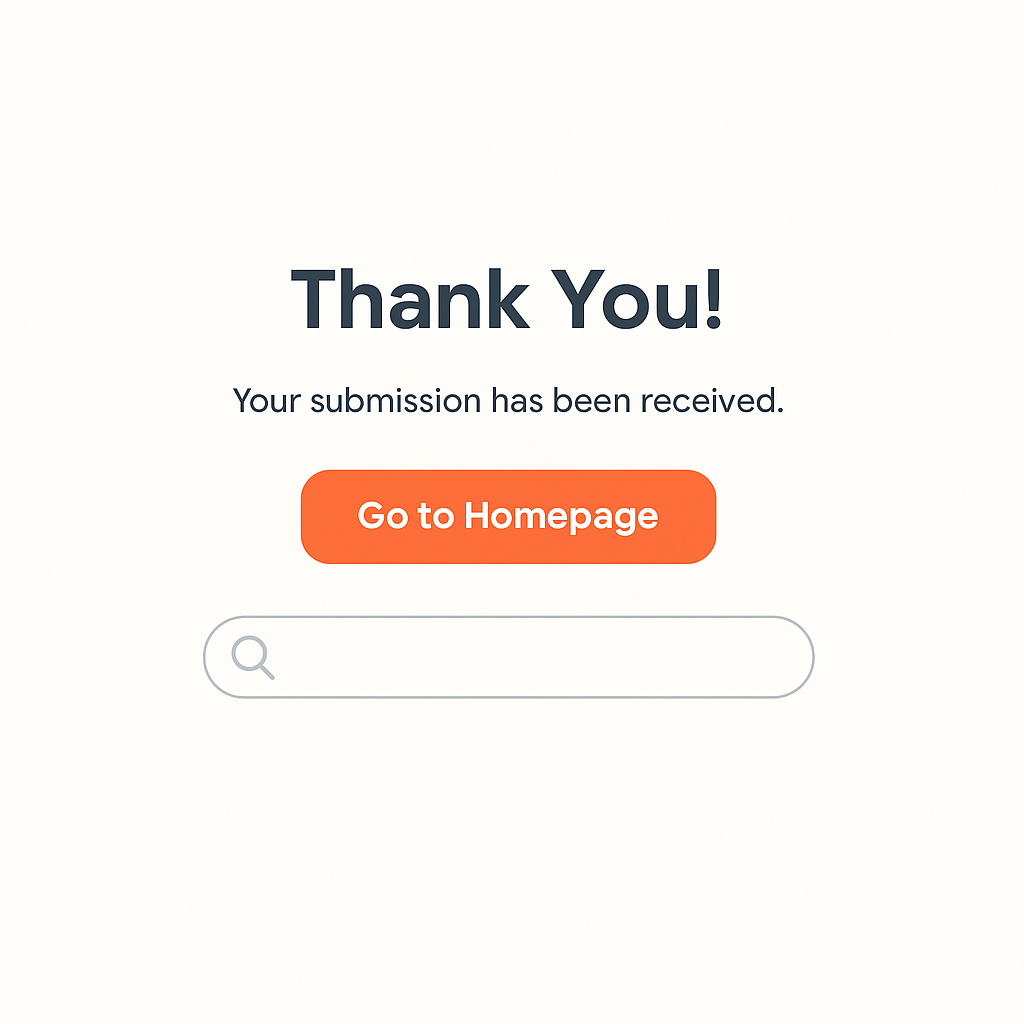
When to Use a Landing Page
While landing pages are often associated with paid campaigns, they make sense in many contexts:
- Launching a new product or offer
- Promoting seasonal deals or time-limited sales
- Driving sign-ups for events, webinars, or free resources
- Collecting feedback via surveys or competitions
- Recruiting for closed betas or exclusive memberships
Even offline promotions (like QR codes on print ads) can send users to tailored landing pages, measuring campaign success across all channels.
Common Mistakes and How to Avoid Them
While the idea of a landing page isn’t complicated, mistakes are easy to make. Some of the most frequent missteps:
- Overloading the page with information or links
- Having mismatched expectations between the ad/message and the landing page content
- Using generic headlines that fail to hold attention
- Forgetting to optimise for mobile devices
- Neglecting to track results or run tests
Keeping things sharp, relevant and actionable is key. Ask: “Does every element on this page nudge the visitor toward my goal?”
Benchmark Conversion Rates
Wondering what counts as ‘good’ for a landing page? Benchmarks vary by industry, but the following gives an idea:
| Industry | Average Conversion Rate |
|---|---|
| E-commerce | 2.86% |
| B2B Services | 5.23% |
| Real Estate | 7.40% |
| Education | 5.80% |
| Travel & Hospitality | 4.40% |
| Health | 3.60% |
Conversion rates depend on factors like relevance, trust, clarity, and the perceived value of the offer. Incremental improvements can move the needle significantly, especially across campaigns drawing high traffic.
Top Landing Page Building Tools and Their Advantages
Several standout landing page building tools make the process accessible and efficient, each offering unique advantages to suit different needs. Unbounce is renowned for its powerful drag-and-drop editor, A/B testing capabilities, and advanced targeting options, making it ideal for marketers focused on conversion optimisation. Leadpages offers a user-friendly interface and a vast library of high-converting templates, perfect for those who want to launch campaigns quickly without sacrificing quality. Instapage excels in collaboration features and detailed analytics, allowing teams to work together seamlessly and refine landing pages based on real-time data. For those already using WordPress, plugins like Elementor provide deep integration and design flexibility within your existing site. Meanwhile, platforms such as Wix and Squarespace combine landing page creation with broader website-building capabilities, making them excellent choices for businesses seeking an all-in-one solution. Each of these tools empowers users to create professional, effective landing pages—no coding required.
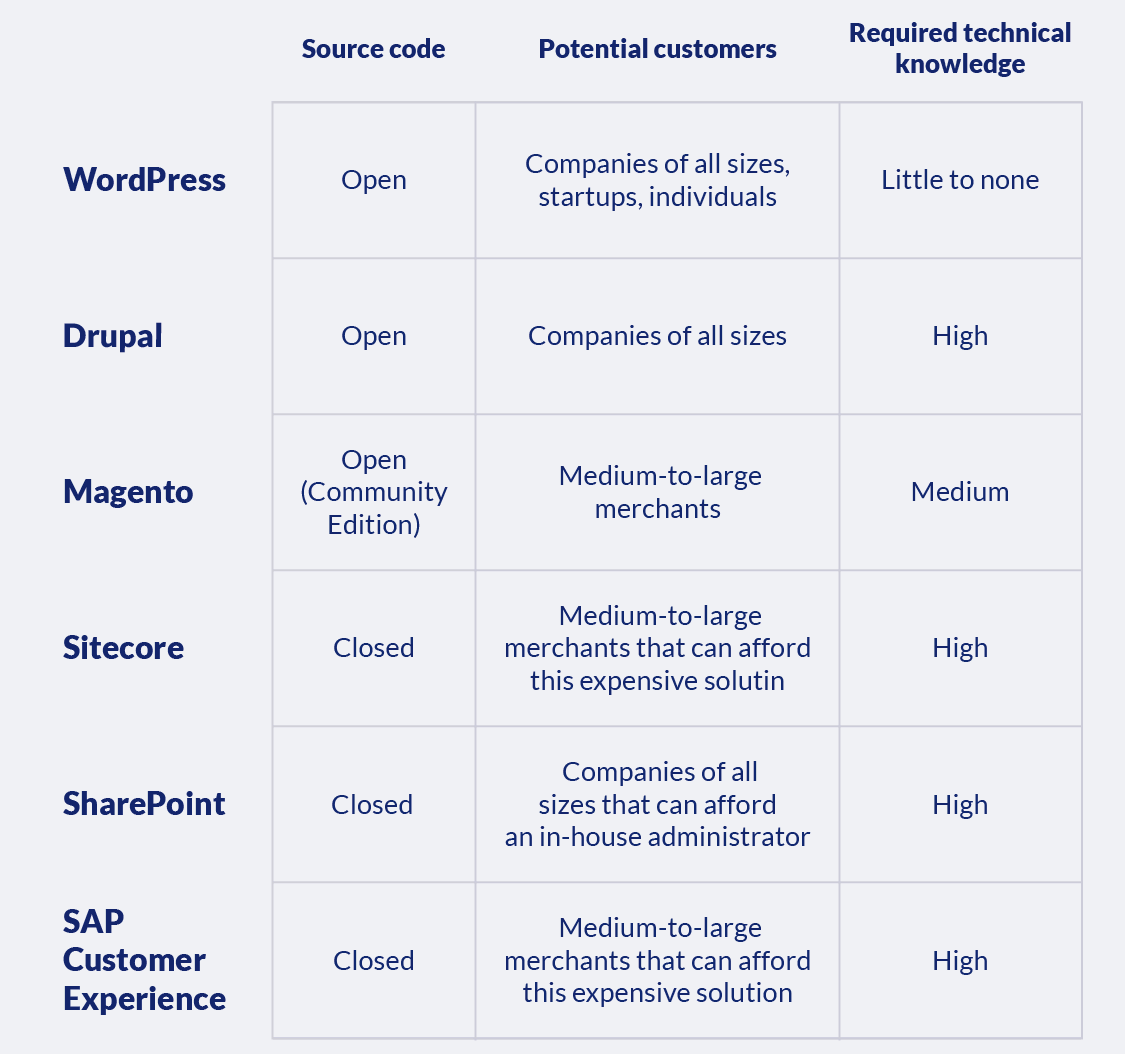
Seeing Landing Pages in Action
Look around and you’ll spot these pages everywhere. Registering for a bank account online? That dedicated sign-up page is a landing page. Clicking an Instagram ad for a sustainable clothing brand and seeing a discount offer? Also a landing page. Even non-profits use them for donations and information drives.
Those who master the art of landing pages hold a distinct edge, funnelling attention to offers that match intent and capture results. Success in digital marketing isn’t just about reaching people; it’s about guiding them, one focused page at a time.

